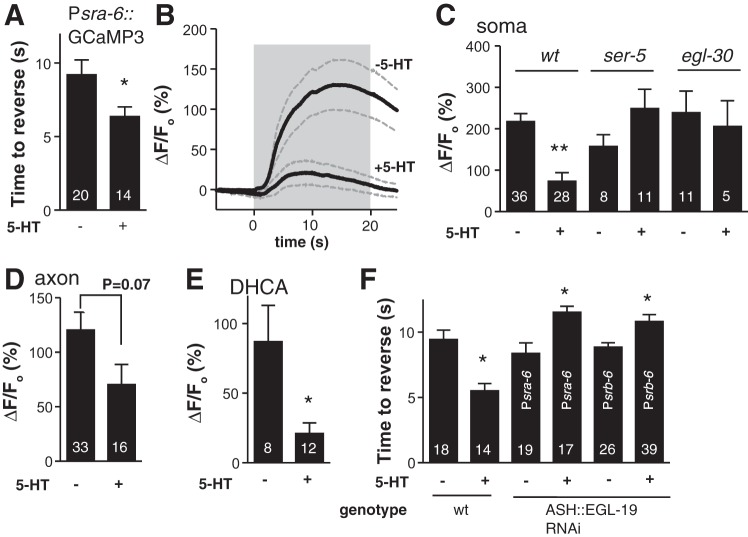Fig. 4.
5-HT modulation of ASH chemosensory responses. A: aversive behavioral responses to 1-octanol in Psra-6::GCaMP3 worms. Basal responses and 5-HT stimulation were normal, indicating that GCaMP3 expression in ASHs does not interfere with ASH function or 5-HT modulation. B: 5-HT treatment reduced Ca2+ signals in ASHs stimulated by 1-octanol (saturated aqueous solution); n = 7 and 13 for untreated and +5-HT, respectively, dashed lines are SEM, gray box indicates 1-octanol exposure. C: 5-HT modulation of ASH Ca2+ transients required the 5-HT receptor SER-5 and the Gαq subunit EGL-30. D: axonal Ca2+ signals were not significantly reduced by 5-HT. E: ASH responses to 1 mM dihydrocaffeic acid (DHCA) were also reduced by 5-HT treatment. F: ASH-selective RNAi knockdown of EGL-19 prevented 5-HT potentiation of 1-octanol aversive responses; instead, 5-HT slightly inhibited them. Two different ASH-selective promoters were used, sra-6 and srb-6, as indicated in each bar. Values are means ± SE; nos. within bars indicate n. *P < 0.05, **P < 0.0001 compared with untreated.

